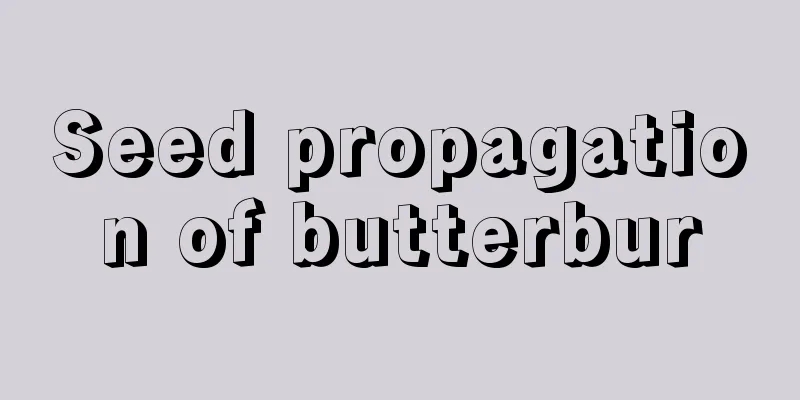Seed propagation of butterbur

Method of propagation of beeswax by sowingsoilWhen cultivating butterbur, choose a semi-shaded, moist, slightly acidic sandy loam rich in humus, and the soil should have good drainage. After the cultivation site is selected, base fertilizer can be applied and the soil can be deep plowed and finely tilled. WeedingWhen sowing in spring, seedlings will emerge around early April, and seedling replacement can be done at the same time when the first tillage and weeding is carried out. The root system of the seedlings grows relatively slowly at this time, so the soil should be loosened shallowly to avoid damaging the roots of the seedlings. In June and July, the seedlings have emerged and the root system has grown well, so the second tillage can be carried out. In early September, the stems and leaves above the ground gradually stop growing, and flower buds begin to differentiate. At this time, the third tillage can be carried out to keep the soil free of weeds. ThinningAfter all the seedlings emerge at the end of April or the beginning of May, thinning can be carried out appropriately according to the emergence situation, leaving the strong seedlings and removing the weak plants. Topdressing and soil cultivationThere is no need to apply top dressing to butterbur in the early stages of its growth to avoid excessive growth. In the later stage of growth, topdressing management should be strengthened. Topdressing should be combined with loosening the soil. On one hand, fertilizer should be covered, and on the other hand, soil should be added to the roots of the plants to maintain the fertilizer effect of the soil. WateringButterbur is afraid of both drought and waterlogging. It needs to be watered two or three times in a row during the spring drought, and preparations must be made for drainage when the rainy season comes. Leaf cutting ventilationThe peak leaf period of butterbur is from June to August. If the leaves are too dense and the ventilation and light transmission are poor, it will affect the differentiation of the plant's flower buds and also cause diseases and insect pests. At this time, you need to clean up the overlapping leaves. It is best to use scissors to trim them. When pulling them apart with your hands, avoid damaging the base of the plant. |
<<: How to propagate white amaryllis
>>: Gentiana breeding methods and precautions
Recommend
How to water flowers with air conditioning water
Can air conditioning water be used to water flowe...
Cutting propagation method of red leaf Amaranthus
Cutting propagation time of red leaf Amaranthus C...
What to do if the leaves of the lucky tree wither
1. Temperature discomfort It likes warm areas wit...
What vegetables are suitable to grow in early spring?
What vegetables are suitable to grow in early spr...
How to make petunia bloom
1. Explosion method 1. Choose soil with good drai...
How to solve the problem of new leaves of green radish turning black and looking burnt
1. Dilute the fertilizer Reason: The demand for f...
How much does a crape myrtle tree cost? Pictures of crape myrtle
1. How much does a crape myrtle tree cost? Genera...
The effects and functions of thornberry
effect Anti-cancer and anti-aging Blackberry is r...
What causes the leaves of calendula to turn yellow?
The reason for the yellowing of calendula leaves ...
These plants are called roses
Porcelain Rose Porcelain rose, also known as ging...
How many years does the plum tree bear fruit?
Introduction to Planting Plum Trees Plum trees ha...
How to graft an osmanthus tree (with pictures) and what rootstock is best
1. Grafting method 1. Cutting and grafting method...
Why doesn't wisteria bloom?
Reasons for not blooming Seedlings The reason why...
How long is the growth cycle of chives?
Introduction to Chive Growth Chives are suitable ...
How to water the three-edged arrow
Watering tips for triangular arrowhead The three-...









